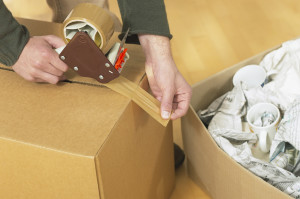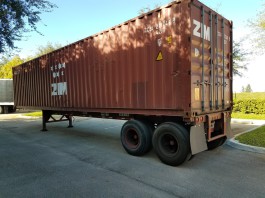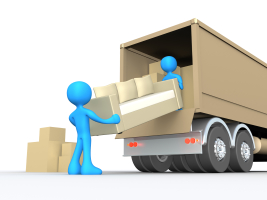Self packing for Moving International
Self-Packing Guide for Overseas Moving
Preparing for an international move can be an exciting but challenging task, especially if you choose to self-pack your belongings. At East Coast Shipping, we understand the importance of providing guidance and resources to make your self-packing experience as smooth as possible. This page offers valuable instructions and tips on preparing and packing for your overseas move. Additionally, we provide a list of recommended locations where you can purchase packing materials.
Instructions for Preparing and Packing:
- Create an Inventory: Start by making a comprehensive inventory of all the items you plan to pack. This will help you stay organized throughout the packing process and will be essential for customs purposes. Inventory instructions
- Research Customs Regulations: Familiarize yourself with the customs regulations and restrictions of your destination country. This will ensure you comply with any specific packing requirements
and avoid any issues during customs clearance.
- Purchase Packing Materials: Visit the following recommended locations to purchase high-quality packing materials:
- U-Haul
- Home Depot
- Uline.com
- Order Packing Materials
- Packing Essentials: Gather the necessary packing materials, including:
- Sturdy moving boxes in various sizes
- Bubble wrap or packing peanuts for cushioning
- Packing paper or foam sheets for fragile items
- Packing tape and a tape dispenser
- Labels, markers, and stickers for labeling boxes
- Furniture blankets or pads for protection
- Plastic wrap or stretch film for securing furniture and other large items
- Pack Methodically: Follow these packing tips to ensure your belongings are properly protected:
- Start with non-essential items and pack them first.
- Clearly label each box with its contents and destination room.
- Use bubble wrap or packing paper to cushion fragile items.
- Fill any empty spaces in boxes with packing peanuts or crumpled paper to prevent shifting.
- Disassemble furniture, if possible, and wrap each piece in furniture blankets or pads.
- Seal all boxes securely with packing tape to prevent them from opening during transit.
- Make sure boxes are packed full, if its not it may collapse on the pallet causing damage to other items.
- Pack heavier items like books or files in smaller thick book boxes and dont overpack heavy items into large boxes.
- Consider Special Items: For valuable or delicate items such as artwork, antiques, or electronics, consider seeking professional packing assistance or investing in specialized packing materials to ensure their safe transportation.
- Take Inventory and Photos: Before sealing each box, create an inventory list and take photos of the contents. This will help with unpacking and serve as documentation for insurance purposes.
- Label and Document: Clearly mark boxes with your name, destination address, and contact information. Keep a separate document or spreadsheet with box numbers and their corresponding contents for easy reference.
- Plan for Customs: Research any required customs forms or documents specific to your destination country. Ensure you have all necessary paperwork properly completed and easily accessible for customs inspections.
- Shipping Arrangements: Once you have packed your belongings, contact East Coast Shipping to make shipping arrangements. We will guide you through the process and assist with the necessary documentation.
Remember, self-packing requires careful planning and attention to detail. If you have any questions or need further assistance, our team at East Coast Shipping is here to help.
Loading a Shipping Container: A Step-by-Step Guide
At East Coast Shipping, we understand that many of our customers prefer to pack and load their own 20ft or 40ft shipping containers when moving overseas. With proper preparation and sufficient manpower, self-loading can be a manageable task. We want to provide you with professional guidance to ensure a successful loading experience. Please follow these instructions:
- Preparation before the Container Arrives:
Before your container arrives, it's essential to prepare your items properly to avoid any damage during transit. Containers undergo various movements and vibrations during transportation. Follow these steps:
- Ensure all items are properly wrapped or protected to withstand potential jolts or impacts.
- Complete packing and labeling of all items, ensuring each item has an inventory number.
- Prepare a detailed inventory sheet with a description for each item.
- As loading a container requires manpower, make sure you have enough individuals available to secure your items safely.
- Keep ropes readily available to tie down your goods once they are loaded.
- The Day of Your Move:
On the day your container arrives, take the following steps:
- Inspect the container: Check for any damages, holes, or cleanliness issues. While our containers are thoroughly inspected before departure, it's always a good idea to double-check upon arrival.
- Check the container floor: Ensure the floor is clean and free of any debris.
- Verify the presence of the container's metal seal: The driver should have the metal seal for the container's locking mechanism. Request and record the seal number separately. Inform our dispatch department about the seal number.
- Container number and identification: Ensure the container number is clearly displayed on the side or right door of the container. Make note of the container number along with the seal number and report them to our dispatch department after loading.
- Loading Your Container:
The loading process will vary based on the volume of goods you have. Here are general steps to follow:
- Open the container doors fully alongside the container side walls to allow better access during loading and prevent door slams due to wind.
- Gather a team of 3-4 strong individuals. Two should be inside the container, while two should be on the ground, lifting your shipment into the container.
- Begin loading with boxes and bulky items such as sofas or box springs. The goal is to create pressure from side to side, preventing the shipment from shifting inside the container. Leave the mattresses for later.
- Build the first floor of boxes using heavy boxes containing books, tools, etc. Place light and fragile boxes on top of the heavy ones. Place pictures, mirrors, or flat, fragile items on the last row of boxes, between the boxes and the container ceiling.
- When you reach the last row, lean one or two wrapped mattresses on the final row.
- Secure the cargo: Use hooks in the container and ropes to create an X shape, strapping all cargo in place. You can also use wood to build a brace for added protection. The X shape provides support and prevents extreme shifting of the load.
- Closing the Container: Once you've completed loading and secured the cargo, close the container doors. Place the seal provided or your padlock on the door and send the container on its way.
Please call our dispatch department with the following information:
- Container number
- Seal number
- Total number of pieces loaded
Additionally, email or fax a copy of your inventory, container number/seal number, insurance documentation, and final payment to our office no later than the day following loading.
Helpful Tip: Packing and loading a container is not an everyday task, and you may require additional help. We can assist you in locating temporary labor agencies like Labor Ready in your area to
provide loading services. If you decide to use professional movers, please consider that they typically cost around $1050-$1500 for a 20ft container and $1400-$2200 for a 40ft container for
loading. Keep this in mind when planning whether to load the container yourself or hire a professional moving team.
Also keep in mind that if you self-load you can only get total loss insurance which protects only against catastrophic loss or damage.
For any further assistance or inquiries, our team at East Coast Shipping is always ready to help.












